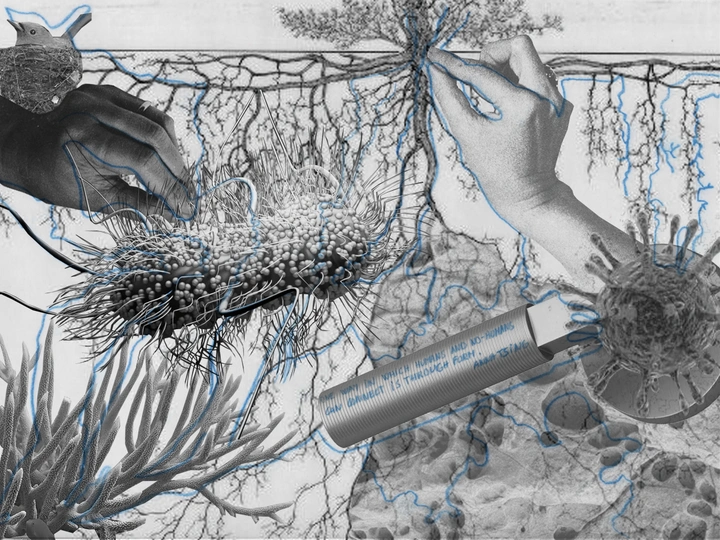Symbiocene Architecture Project

I am an architect, writer, and researcher with over 20 years of experience in complex architectural design, having led international competitions and worked with figures such as Enric Miralles and Josep Miàs. My current practice explores the intersection of language, image, and ecological thought to propose a new architectural paradigm rooted in symbiosis, uncertainty, and co-creation. I work through experimental visual tools (drawing, collage, and AI) guided by conceptual language and speculative imagination.
My work is deeply informed by transdisciplinary research in art, philosophy, ecology, and literature. I have studied at the Sorbonne (art history), completed courses in fine arts, and developed independent research connecting architecture with quantum physics, speculative fiction, and feminist theory. My practice moves between theory and visual experimentation, with a focus on the generative role of language in producing new architectural thought.
I recently launched Symbiocene Project, a platform that questions the language of sustainability and proposes architecture as a sympoietic, more-than-human process. I also mentor young professionals in architecture and design, helping them navigate their creative path with clarity and depth. I am based between Catalonia and southern France, where I am building the next stage of this research through writing, digital tools, and site-specific experiments.
Symbiocene Architecture Project is a research line grounded in three pillars: symbiosis as a generator of evolutionary novelty, language as a transformative agent, and form as an interspecies relational interface.
Inspired by Lynn Margulis’s endosymbiotic theory and Glenn Albrecht’s concept of the Symbiocene, this project reimagines architecture as a co-creative species within an ecological System, situated, adaptive, and no longer human-centered.
Language is not merely descriptive, it is generative. Drawing on Timothy Morton’s ecological pronoun, Ursula K. Le Guin’s speculative narratives, and Donna Haraway’s notion of response-ability, the project calls for a linguistic and epistemological shift in architectural thinking.
Following Anna Tsing, form is understood not as imposition but as encounter, a connector between species. Form becomes epistemological, not just aesthetic.
Architecture has failed to listen.
It’s time to speak a different language, one that embeds us within the world instead of separating us from it.
Facing climate crisis, biodiversity loss, and social fracture, architecture must evolve. Construction accounts for 39% of global CO₂ emissions, yet the discipline still serves the same logic of growth and speed. Technical improvements are no longer enough. We need a transformation of the system of thought itself.
This project works at the core of those mental structures to trigger the evolutionary changes architecture urgently needs.
It unfolds as a symbiotic structure of research, a space of encounter between disciplines, species, tools, and ways of knowing.
The research combines speculative writing, visual experimentation, conceptual architecture, and AI image generation.
Each format becomes a medium for multispecies thinking and epistemological rewilding.
Symbiocene Architecture is not a product: it is a living research practice that listens, connects, and co-creates.